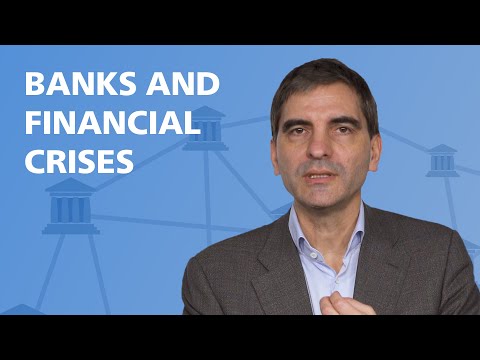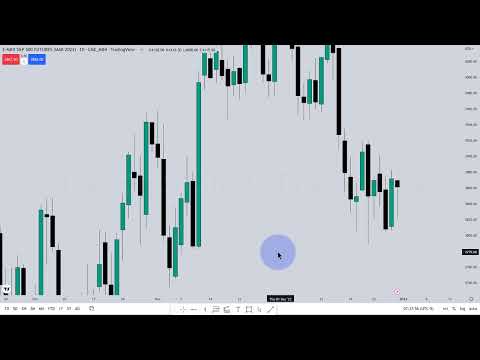Banks and Financial Crises explained

The. Last major financial, crisis, hit the world economy in 2008. It. Had the potential, of becoming a dramatic, economic catastrophe, on, the scale of the Great Depression of, the 1930s. In. Other. Words a combination. Of bank failures, and a severe global economic. Downturn lasting. For several years. To. Understand the financial crisis, you have to first understand, how a bank works then. You have to know about the specific risks, of a bank and final, it's important, to know about how banks trade with each other with. This we can understand, the emergence, of the financial crisis of 2008. And we, can understand the economic, response to this crisis. How. Do banks work. Banks. Perform, an important, task for different members of society. Savers. Want to be sure their money is in a safe place they. Also want to be able to withdraw it and use, it to make payments, at any time in. Other words they only want their money tied up for a very short term. Borrowers. By contrast, whether, individuals. Or companies want. To borrow money for a longer, period of time as they, invest in real estate or, in machines that, they can't sell at shorthand. Banks. Use the deposits, of many savers, as a basis, for loans, to individuals or. To companies, this practice, of coordinating. The different time, frames of burrows and savers, is called maturity, transformation this. Is the major economic benefit, of having banks, this is possible, because on a regular day only. A small portion of the. Money deposited is, withdrawn. This. And other important, financial crisis mechanisms, can, be explained, using the simple model of a stylized, bank, balance, sheet, we. Will start by looking at a very simple bank that focuses, exclusively on. Taking, deposits and, lending, money a balance. Sheet displays, the assets, of a company and, how these are financed. The assets of a bank are shown on the left this, side shows how the bank uses, its funds. How. The assets, are financed, is shown on the right so. This side shows the source of funding, in the, case of a traditional, commercial bank the, funds come from customer. Deposits. This. Money is the basis for loans, this. Is risky because if a depth of defaults, the, money is lost for the bank the bank must be able to secure these losses by, money, that actually belongs, to the owners of the bank this. Is called equity capital in, the, case of banks equity. Usually, makes up a small portion of the balance sheet total. What. Do you think what. Percentage, of a typical large banks, total assets, was financed, through equity, just before the financial crisis, in 2007. The. Right answer, is two percent a hundred, years, ago the, percentage, was around 20 percent after. World War two the, percentage, dropped, from ten to about five percent in, the. Boom phase before the crisis, equity. Only accounted, for around 2%, of the balance sheet total. This. Means 98. Percent of the bank was financed, with debts. Were. A bank not to lend money it, would operate purely, as a safe it, would put your money in a safety deposit and, that's where it would stay instead. The bank uses the money deposited as. A basis, for loans for, example to property, owners or to individual, companies a bank. Must also always, be in a position to pay out cash to its customers, that is, why it must keep a certain amount of cash on hand as part of its assets. Usually. A bank, will keep this amount of cash as low as possible because, by lending out money the. Bank earns from the interest charged on the money lent by. Contrast. The, bank does not earn any interest, with cash the way, a bank makes a profit is by paying lower interest, rates to us the, savers then the interest rate it charges for lending money, that. Is known as the interest, rate spread, and constitutes. The foundation of basic banking the.
Interest Rate spread compensates. The bank for the costs involved with lending money such. As assessing the creditworthiness of, the borrower's and their projects. The. Particular risks, of banks, as. The. Chart shows two. Things are notably, small, on a bank balance sheet and this. Is where the main risks, lie, firstly. The low level of cash and secondly. The, low level of equity capital, the. First leads to liquidity risk the. Second, to solvency, risk, the. Liquidity risk is particularly, high, for banks because, of the described, business, model it. Is a consequence, of the fact that a banks customers, have the right to withdraw their money at any time, at. The same time banks, used that money as a basis, for loans this money then, cannot be converted into cash immediately. As mentioned earlier banks, only, keep a small amount of the money, in cash because it does not earn any interest on it the, small amount of available cash, exposes. Banks, to the risk of what is referred to as a bank run the. Cash of a bank is not enough if a large number of savers, want to withdraw their money at the same time. When. Customers. Are worried that their bank is in distress it. Can happen that they all at the same time want, to withdraw their money without being aware they trigger the bank failure they so fear the, bank then fails because it quickly runs out of cash, before. The Second World War bank. Runs happened, quite frequently, the worst, bank run in history, was, the main trigger of the Great Depression of, the 1930s. Thereafter. An economic. Solution was found for this problem, it is, called the deposit, insurance a, deposit. Insurance protects. Bank customer, deposits from, losses, in the event of a crisis, in. Switzerland. For instance, a customer's. First 100,000. Francs deposited. At a bank are insured, this. Means that in the event of a bank failure the deposit, insurance provides. A guarantee it, guarantees, that the state will step in and pay out the customers, as, a result costumers, have no longer any reason to withdraw their money even. If the bank is in distress since. The introduction of this protective, measure there has practically, been no classic, bank run the. Second important risk is the solvency, risk, when. A company, suffers losses these, losses must, be borne by the company, owners that, is to say the, equity providers, if, the. Losses are too high a company. May become insolvent. The. Company's liabilities. Are then higher than its assets. In. The case of our simple, bank such, losses can, arise when the value of claims on loans drops, this. Reduces, the equity, capital of the bank if. For, instance banks. Have given many loans to companies that become unable to repay, their debts due, to an economic, crisis, this. Can cause the banks, to become insolvent.
Because. The equity capital, of typical, banks is rather low the. Risk of being unable to absorb, all the losses is relatively, high as a, result. The, solvency, risk in banking, is significant. How. Banks, trade with each other. To. Understand, the origins, of the financial, crisis, we, need to expand, our stylized, balance, sheet with, the trading business and the money market, this. Is an additional, business and an additional, form of financing. Banks. Made large, tips on the money markets, in, order to invest in securities, here. Too the banks try to earn money through, the interest rate spread. Securities. Are assets, owned by the bank on which it can earn revenues. Prior. To the financial crisis, a second. Source of funding besides, customer, deposits became. More and more important, money. Market debts. For. This purpose, the banks take on additional debts not, from US bank customers, but, on the money market, from other banks and large companies. Similar. To customer, deposits these. Steps are very short-term, in, other words money, market debts are loans to the bank they, typically have a term of one day and then. They have to be repaid or to, be renewed. And as with loans the, bank earns, by paying a lower interest, on the money used for funding, these securities. Purchases. The. Run-up to the financial crisis. The interest, rate banks had to pay on this money market depth was very low as a result this type of financing was relatively, cheap and it was easy to get this, means that for years it could be easily renewed, on a daily basis as, soon as funding is incurred on the money market, that, debt is not owed to customers, but, to companies, and above all to, other banks. If. A bank incurs a debt with, another bank that bank, gives the other bank a promissory, note and receives, money for it but. For the bank lending, the money the, promissory, note is a security. On the assets side of its balance sheet now if, a bank goes bankrupt then. That promissory, note suddenly, becomes worthless for the other bank and has, to be written off, this. Loss reduces, the other bank's equity, capital and can. In turn drive. That Bank into, insolvency and, that. Is what presented, a major risk, before. The financial crisis, the banks were strongly interconnected, because. They lent ample, amounts, of short-term, money to each other. What. Led to the financial crisis, that hit in 2008. We. Now have all the basics, to understand, the financial crisis, in the, following, we will describe what happened, in the immediate wake of the bankruptcy, of the Lehman Brothers investment, bank in September, 2008. It. Is a self-reinforcing. Downward. Spiral, and that is the basic mechanism of, any financial, crisis, a, characteristic. Typical, for any financial crisis, is that it can happen very quickly the financial, system can literally, collapse within a matter of hours if this spiral, would not have been stopped in time the, global financial system probably, would have collapsed with, fatal consequences for, all of us in the years preceding the financial, crisis, the, global, economic situation was, remarkably, good. It was easy to make large amounts of money on the financial, markets and the risks.
Were Seen less and less as, mentioned. Earlier above. All the, bank's substantially. Expanded, their trading activities, they. Purchased an ever-increasing number. Of securities. Funded. Through short run money market debts. With. Time the banks also started, to buy very risky securities however. Given the excellent, situation, of the world economy these, risks, were not easy to detect but for various reasons doubts, emerged, in 2007. And increasingly. In 2008. As to. The recoverability, of certain, securities, in particular. Securities. Connected, with the US housing market were, increasingly, being called into question as, to the recoverability, as a result. More, and more financial market, participants, started, to sell these securities. As. Trust, in this securities. Lacked and there were no buyers the, prices of these securities, started, to drop heavily, this triggered the downward spiral for all banks, given. That the banks had a large number of these securities, in their balance sheets their. Equity, capital shrunk, considerably as. A result, of these losses, this. Meant that the solvency, situation. Of the bank's concerned. Deteriorated. More and more all. Of this happened, fairly quickly and, hit, a large number of banks worldwide. Simultaneously. This. Made it very difficult to assess how solvent, the individual. Banks still were. Suddenly. The fact that the banks had financed, these securities, with short term money market EFT became, a problem they had to renew these that's every, single day have. A guess, how. Much of their total funding, did, Lehman Brothers have, to renew every day shortly, before filing for bankruptcy. The. Right answer, is 1/3 or 200. Billion US dollars, with. This amount of money you, could buy a new family car for every, single human being living, in Switzerland. Such. Short term money market debts, had, not been a problem in the past but, now the bank's faced increasing, difficulties, because, all of a sudden it was unclear whether these banks were still solvent. In other words whether they had enough money to repay their debts as a result they received less money from the money markets this. Is how a solvency. Problem, suddenly resulted, in a serious liquidity problem. And thus, in the other previously, described, Bank problem. The. Outcome, was ultimately reminiscent. Of a bank run but. In 2008. The situation. Was not that the customers, wanted their money back, rather, the, money market, lenders no longer renewed their loans. But. The effect was the same the, banks ran out of money at breakneck speed. Nobody. Expected the bank run because everybody thought there, is a Deposit Insurance but, there is no Deposit Insurance for. Money market thefts the. Banks needed to gain quick, access to cash so as to be liquid, for. This purpose they had to sell what they owned and turn, it into cash a bank. With almost no cash still, owns two things claims. On loans and securities. Loans. Are almost impossible to, sell they, are individual. Contracts, that cannot be sold in a market especially. Not quickly, however. Securities. Can be sold in a market and that, is why all of the bank's concerned, began, to throw their securities, on the market in an effort to obtain cash, but, because they all did this at the same time the, market was full of sellers, versus hardly, any buyers.
The. Logical, consequence, of such a situation, in any market, is that prices drop this. Meant that securities. Prices dropped drastically yet, again and this, did not just affect the prices, of dubious securities, but of all securities. With that the, system, returned to the starting point of the spiral, due. To the renewed drop in securities, prices this, time on a wide scale equity. Capital decreased, even more thus, further, exasperatingly. Solvency, problems. Typically. For financial crisis is that liquidity risks, and solvency risks are mutual. Amplifiers, and the banks desperate, attempt, to obtain liquidity. Is what puts the solvency, of the entire system, with the question if. This spiral were left to continue it. Would push the entire financial system, into, the abyss within, a very short time the. Global. Policy, response. Global. Politics, feared a repetition, of the Great Depression of, the 1930s, when. A series of bank failures, triggered, the by far worst, global, economic. Downturn of, the last century. Economic. Policy, is attempted, first of all to, stop the banks from selling more securities, to maintain liquidity. Otherwise. These, securities, would have become worthless and so, more, and more banks, would have become insolvent including. Banks that held high quality, securities, the first measure was for the central banks to give money to the banks and in return, to take over the banks claims on loans or securities, as collateral. This. Liquidity support is not a bank bailout, in the usual sense it is an agreement between the central bank and the bank that, the bank's get liquidity, in exchange. For high, quality securities. And that, is precisely, why central, banks were created, because. Financial, crises have occurred repeatedly as, far back as the 19th century when Chris, a solvent. Banks ran out of liquidity very, quickly. However. A second, policy measure was necessary, because, many securities, were almost worthless do too careless, money lending in the pre-crisis. Boom period, liquidity. Support alone, was not enough. Ultimately. Liquidity. Support is of no use if the banks become insolvent, due to such losses it, soon. Became clear that far, more extensive measures, were needed to prevent a collapse of the banking system, these. Ultimately, consisted. Of preventing, banks from insolvency, by, means of the state stepping, in and strengthening. Bank equity. The. Combination, of liquidity and solvency support. Put, an end to the downward spiral this prevented, large-scale, bank failures, but this requires taking, really drastic, measures because solvency, support is nothing else than a direct subsidy to a bank but this subsidy, means taking.
Taxpayers, Money to save, banks that have taken life-threatening. Risks, but. The alternative, would, have been so unattractive, that, the authorities, were left with no other choice, the. Collapse of major banks, potentially. Even the entire banking, system would, have caused a monumental. Economic, downturn. Let. Us illustrate this, point, during. The Great Depression US, industrial, production, was halved and unemployment. Rose from 3 percent to over 25. Percent, thanks. To the described, measures, such. Dire scenarios. Were prevented, many, increases, of the recent financial and economic, crisis, resembled, those of the Great Depression because the crisis of the 1930s. Was thoroughly. Analyzed, the, lessons were learned for, avoiding, a second Great Depression. Specifically. There, were three lessons learned from the Great Depression, do. Not allow a bank run to occur, save. System relevant, banks and, absorb. The effects on the real economy with, expansive, monetary, and fiscal policies. This. Presentation, has focused on the first two measures which are directly linked to the banks and the financial system, the most. Important, lesson from the crisis is clear it is incredibly, dangerous if large, banks, with low equity capital take, enormous risks because, if a bank is of a certain size the, government has to step in to save it in the event of a crisis, that is, not compatible, with a fair and efficient, market economy, system. This is why in the wake of the crisis, strong. Internationally. Coordinated efforts. Were made to make the banking system more crisis, resistant, by means of regulatory, adjustments. Decisive. Factors, in this respect with, a significant. Increase of capital, requirements, especially, for, system relevant banks. These. Requirements. Were agreed upon in what was called the Basel, process, and have, since been largely implemented.
2019-03-29 22:39



10/10 Illustrations 10/10 Audio + (featuring Brunetti) 11/10 simplification of a complex matter in about 20min I'd very much welcome the adapting of other lectures to your level of innovation and awesomeness!!! brilliant video thx a lot!!